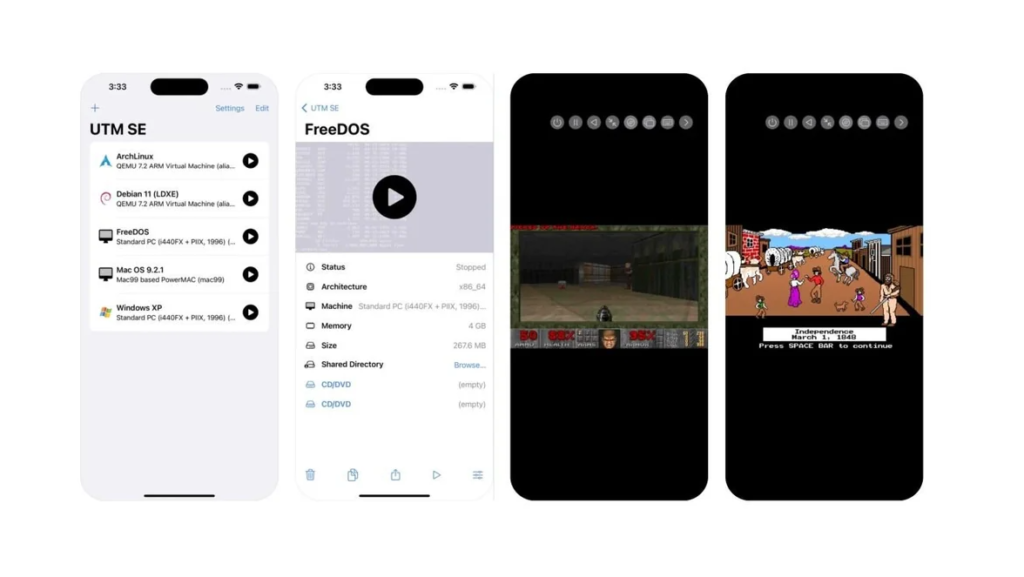In a surprising move that has sent ripples through the tech world, Apple has approved the first PC emulator app for its iOS ecosystem. The app, named UTM SE, allows users to run older versions of Windows and macOS on their iPhones and iPads.
What is an Emulator?
An emulator is a software program that mimics the hardware and software of another computer system. In this case, UTM SE creates a virtual environment within an iPhone or iPad that can run older PC operating systems and their associated software.
The UTM SE (Unified Technology Machine Special Edition) emulator is designed to bring the experience of legacy operating systems to iOS devices. Here are some key features:
- Emulating Classic Software: With UTM SE, users can run “classic software” and “old-school games” on their iPhones, iPads, and even the Apple Vision Pro mixed reality headset.
- Supported Architectures: The emulator can handle x86, PPC (PowerPC), and RISC-V architectures, allowing users to explore a wide range of legacy applications.
- Graphics and Terminal Modes: UTM SE supports both Video Graphics Array (VGA) mode for graphics and terminal mode for text-only operating systems.
How Does UTM SE Work?
UTM SE leverages the powerful processing capabilities of modern iPhones and iPads to create a virtual machine where older PC operating systems can run. The app supports both VGA mode for graphics and terminal mode for text-only operating systems. While the exact technical intricacies are complex, the end result is a user-friendly experience that allows users to access classic software and games on their portable devices.
Implications and Future Outlook
Apple’s decision to allow PC emulator UTM SE on its devices marks a significant departure from its traditionally closed ecosystem. This move could potentially open up new possibilities for users, such as running legacy software for work or play, or accessing older games that are no longer available on modern platforms.
However, it’s essential to note that the app’s focus is on older systems, and running resource-intensive modern software might not be feasible due to the limitations of mobile hardware. Additionally, the legality of running specific software within the emulator could raise legal questions.
As the app gains traction, it will be interesting to see how Apple responds to user feedback and whether this move will lead to further relaxation of restrictions on its platform.






































